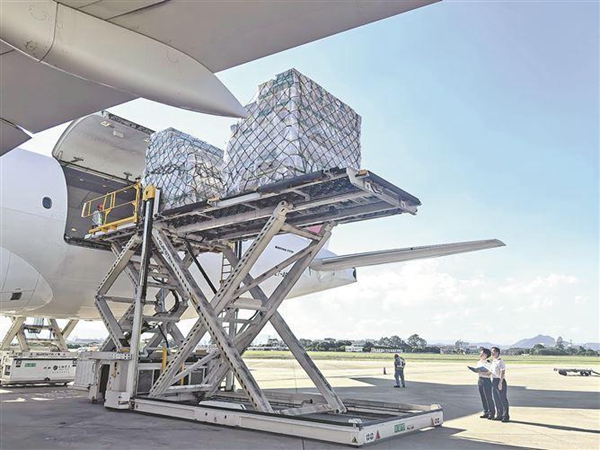

Customs officers at Xiamen Airport supervise parcels traveling to Brazil via the BRICS route. [Photo/Xiamen Daily]
The first domestic air freight route for cross-border e-commerce in BRICS cities celebrated its second anniversary. Xiamen Customs has overseen 474 round trips of the BRICS flights, with a total import and export volume of 33,200 metric tons and 31.36 million cross-border e-commerce parcels for export.
Trade between China and Brazil is expanding rapidly. The BRICS route, connecting Xiamen in China with Sao Paulo in Brazil, has been highly sought after by businesses since its opening. Through this cargo corridor, the logistics, trade, and e-commerce companies from China and Brazil are becoming increasingly intertwined.
This route is operated by Ethiopian Airlines using Boeing 777F freighters with three flights per week. During exports, it mainly carries domestic cross-border e-commerce products such as footwear, clothing, and daily necessities, achieving a cargo load factor of 100 percent. On the return journey for imports, it brings fresh products like grapes and salmon to Chinese consumers.
Compared to the previous method of exporting packages to South America via air freight from other regions, opting for the BRICS specialized logistics line offers lower costs and faster speeds. Nowadays, many parcels from Guangdong province are also choosing this specialized route for exports to Brazil. The BRICS specialized line has become the preferred channel for Chinese cross-border e-commerce enterprises to expand into the Brazilian market.
China has launched a new pilot program to allow eligible enterprises greater access to overseas financing in support of green and low-carbon transformation projects, the country's foreign exchange regulator said on Aug 21.
To further streamline the experience, China is expanding tax refund stores, broadening the range of refundable goods, and refining refund procedures, ensuring an efficient and seamless shopping experience for global visitors.